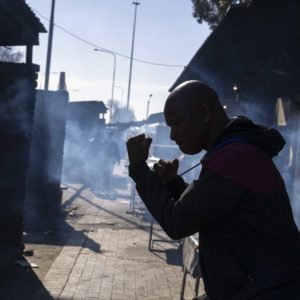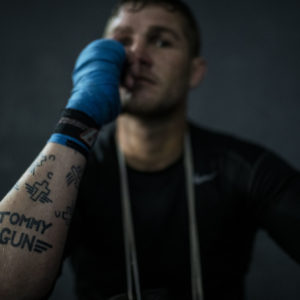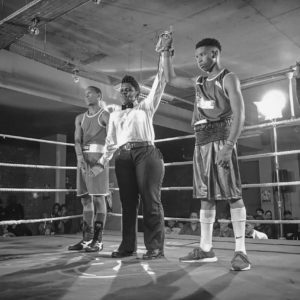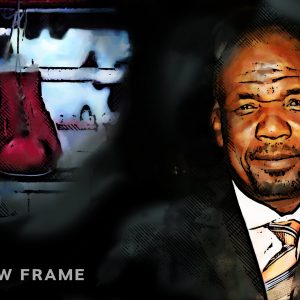The rites and rituals that make the boxer
There is a link between initiation rites for boys and the world-class boxers that South Africa produces. It’s a built-in language of combat that takes other forms around the world.
Author:
30 May 2022
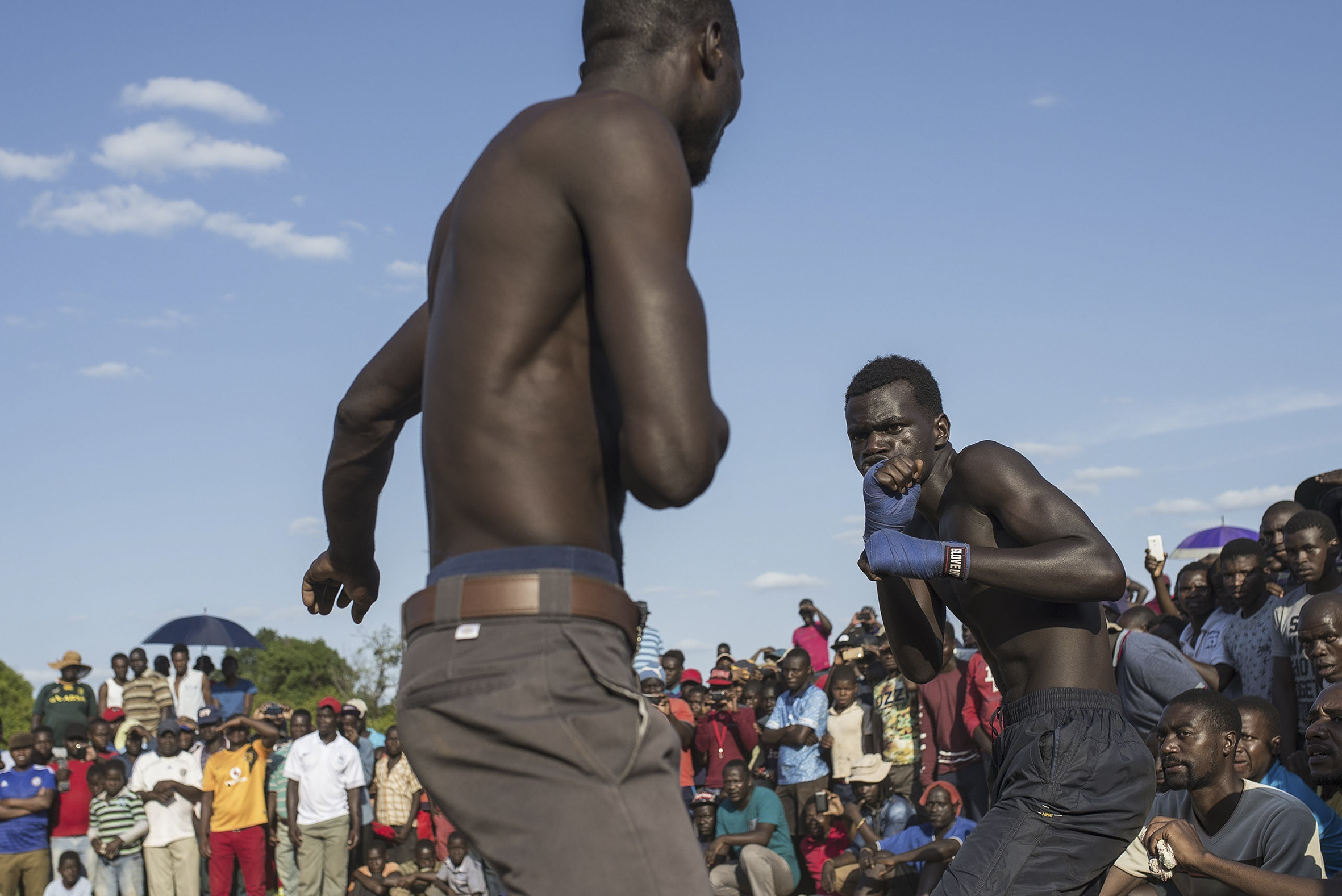
Winter is almost here and the air will soon fill up with talk of returns to mountain schools for boys bent on beating themselves into manhood. Equally clamorous this season are conversations about finally being able to return to boxing arenas, now that Covid-19 lockdown restrictions have eased.
These are more than puerile or premature preoccupations with post-pandemic realities. They hint at a remarkable link between combat sports and rites of passage in the land of the fallen rand. There’s a striking correlation between Mzansi’s continued capacity to keep producing world-class boxers and our customs of initiating boys into manhood.
It’s noteworthy that most of our boxing champions come out of those provinces that still practise traditional rites of passage for boys. Consider that the Eastern Cape and Limpopo are the provinces where initiation is most alive and well. They also lead the nation in the number of champion boxers produced over the years, rivalled only by Gauteng as a breeding ground for great fighting men.
Related article:
Gauteng, however, is a place of internal diasporic convergence for many young men who grow up in more traditional provinces. And as an urban economic heartland, it has evolved its own boyhood culture of the streets. The province is marked by after-school-is-after-school fist fights and other urban customs that have replaced traditional mountain initiation schools as a shaper of the relationship boys have with the fervour of fighting. Gauteng’s streets have produced heroic figures such as Arthur “The Fighting Prince” Mayisela, Dingaan “The Rose of Soweto” Thobela and Jacob “Baby Jake” Matlala – and a later generation of stars like Moruti Mthalane.
An alternative though similar mode of urban machismo is alive in white neighbourhoods too, especially on the East Rand of Joburg, which incidentally has a gang culture that has mingled with nightclub bouncer clicks and underworld protection rackets. This theme was illustrated vividly in the story of the hitman-turned-boxer and then state witness in the Brett Kebble case, Mikey Schultz. And the likes of Brian Mitchell, who was inducted into the International Boxing Hall of Fame in 2009, along with younger warriors such as Thomas “Tommy Gun” Oosthuizen and historic figures like Vic Toweel come out of this variant of Mzansi’s cult of machismo.
A pugilistic pipeline
It’s remarkable that among amaXhosa and Bapedi, initiation rites of passage for boys has had stick fighting, or intonga in isiXhosa, as a central ingredient, a perennial martial art and pastime of choice. Here, one’s ability to take and survive a blow is matched only by an initiate’s ability to deliver one with brutal beauty and ability. These are skills often first honed by boys herding cattle and goats in the bush; this taste for boyhood bruising is part of the drama and dreaming about future brawls they will one day win as initiates on the mountain.
Further north in Limpopo, VhaVenda have in recent years seen the revival of Musangwe (the circle), a yearly cultural event during which young men engage in a brutal brand of bare-knuckle boxing. Musangwe is said to have roots in the pre-colonial fighting practices of herdboys. Its revival has inaugurated an annual pilgrimage by enthusiasts of the hurt game, who make the trip to Venda every December to witness or partake.
These traditions have been a pugilistic pipeline that has seen Limpopo produce an impressive roll call of champions. Lovemore “The Black Panther” Ndou, who now lives in Australia, is a Limpopo native. He held the International Boxing Federation (IBF) junior welterweight title in 2007 and the International Boxing Organization (IBO) welterweight title from 2009 to 2010. The great contender, Phillip “The Time Bomb” Ndou, who won his first 30 of 32 fights by knockout, was raised in Thohoyandou, Musangwe country. And Cassius “The Hitman” Baloyi held the IBF, IBO and World Boxing Union super featherweight titles at various times in his career.
Related article:
The link between the sweet science of bruising and traditional initiation may seem non-existent in KwaZulu-Natal. This is because King Shaka kaSenzangakhona abolished male initiation during his reign in the early 1800s. However, he replaced it with a military culture that made warrior status aspirational for masculine identities among amaZulu. This version of machismo has given us great pugilists like South Africa’s only WBC two-time super middleweight titleist, Thulani “Sugar Boy” Malinga.
The Eastern Cape, which arguably sends the most number of young men to mountain schools, is unparalleled in its pugilistic prowess. It has produced a prodigious pantheon that arguably starts with Nkosana “Happyboy” Mgxaji, Mdantsane’s first great boxing hero, and later, former IBF super bantamweight champion Welcome Ncita, IBF super bantamweight champion Vuyani “The Beast” Bungu and Zolani Tete, who has held the IBF junior bantamweight and the World Boxing Organization bantamweight titles.
It goes without argument that fighting is a universal language. Some cultures speak it more fluently than others, though, and this fluency is predicated on how much the contemporary is shaped by age-old traditions.
Indigenous cultures of combat
In Ghana, the Ga people have an ancient indigenous pugilistic tradition called asafo atwele, a kind of ritualistic combat sport whose stream flows deep in a village called Bukom, the West African country’s capital of boxing. The wretched neighbourhood has produced a notable world champion boxer every decade since the 1970s.
These include the likes of Azumah Nelson with his two world titles, the WBC featherweight title from 1984 to 1987 and the WBC super featherweight title twice between 1988 and 1997. Then there’s former IBF welterweight champ Joshua Clottey, who defeated Zab Judah in August 2008. Boxer-turned-trainer Kwame Asante is another notable name. All of them follow in the footsteps of Ghana’s first world title holder, David “DK Poison” Kotey. He held the featherweight title between 1975 and 1976.
The contemporary fighting spirit of boxers from Mexico is defined by blood, grit and guts. To speak of Mexican boxers is to contend with the ultimate never-say-die fighting stylists who leave it all in the ring. Mexican machismo, too, is rooted in indigenous cultures of combat.
Related article:
In the central and western regions of the country, the Nahuatl-speaking people still have some of the pugilistic fire of their Aztec and Toltec roots. Every year during the first days of May, men, women and children take part in fighting festivities dedicated to asking the gods for a good rainy season. It is said that every drop of blood that falls to the ground guarantees more rain. It’s part of a taste for spectacles of fighting that keeps Mexicans at the top of boxing cultures the world over.
However, Mexican machismo has also been credited with fuelling criminal behaviour and regressive kinds of toxic masculinity. Though it has gifted the country with admirable champion fighters, it has co-authored perceptions of Mexico as one of the most violent societies in the world.
Two sides of the coin
In South Africa too, with its unacceptable levels of violence and abuse, the fondness for fighting comes under special scrutiny. Several women have accused Thobela of physical abuse. It figures highly that trained martial combatants have the capacity to be a danger to society when they go rogue. This is perhaps why martial arts practices also teach a deep sense of discipline. The legends of many martial arts such as Japanese Budo, the way of the warrior, are wrapped up in spiritual practice. In this way, the brutality of Budo and the beauty of Zen Buddhism are two sides of the same coin.
Boxing gyms, like mountain schools for training boys into manhood, are places for learning how to overcome and master base toxic impulses. We visit them to beat ourselves into an ideal meek warrior archetype. These cultural centres persist over the ages for the same reason combat sports persist as perennial global events.
Related article:
This is in part because, as Joyce Carol Oates observes in her seminal text, On Boxing, “each boxing match is a story – a unique and highly condensed drama without words. Even when nothing sensational happens: then the drama is ‘merely’ psychological. Boxers are there to establish an absolute experience, a public accounting of the outermost limits of their beings; they will know, as few of us can know of ourselves, what physical and psychic power they possess, of how much, or how little, they are capable.
“For, though the instinct to fight and to kill is surely qualified by one’s personal courage, the instinct to watch others fight and kill is evidently inborn. When the boxing fan shouts, ‘Kill him! Kill him!’ he is betraying no peculiar pathology or quirk but asserting his common humanity and his kinship, however distant, with the thousands upon thousands of spectators who crowded into the Roman amphitheatres to see gladiators fight to the death.”
With that, perhaps the last word should go to that subversively nihilistic character in the movie Fight Club, Tyler Durden, who asks: “How much can you possibly know about yourself if you’ve never been in a fight?”

